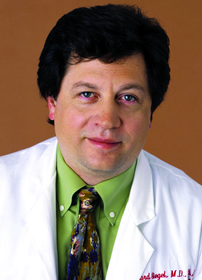TNF and TNF receptors have moved from research curiosities to important therapeutic targets in rheumatology, and researchers are pushing to repeat that success with related cytokines.

“The agents that target TNF or its receptors are highly efficacious in treating all sorts of autoimmune diseases,” said Michael Croft, PhD, Professor and Head of Immune Regulation at the La Jolla Institute for Allergy and Immunology. “But TNF and its receptors are just one set of molecules in a large family of related receptors. All of the proteins in this superfamily play significant roles in autoimmune disease.”
Dr. Croft will explore some of these related proteins during a basic science symposium TNF and Beyond: The TNF-TNFR Cytokine Superfamily from Bench to Bedside from 2:00 – 4:30 pm Monday. Oncology researchers are pursuing similar targets.
“The TNF superfamily has been an important area of research for two decades,” said Sara Hymowitz, PhD, Senior Director and Principal Scientist in Protein Chemistry and Structural Biology at Genentech, Inc. “As the biology of the superfamily has been elucidated, different pathways have been studied intensely at different times. Researchers thought stimulating these molecules could be useful in the oncology. That’s why we’re talking about tumor necrosis factor, TNF, even though this is a rheumatology conference. We can block inflammatory processes in autoimmune disease and turn them on in the cancer setting, all within this same superfamily of related molecules.”

In addition to anti-TNF agents, biologics targeting two other proteins in the TNF superfamily have been approved by the Food and Drug Administration, noted Richard Siegel, MD, PhD, a senior investigator and Clinical Director of the National Institute of Arthritis and Musculoskeletal and Skin Diseases. Belimumab has been approved for use in lupus and denosumab for bone metastases.
Dr. Siegel will discuss the cytokine TL1A and its receptor DR3. TL1A was originally described as a T cell costimulatory cytokine, a property shared with a number of other members of the TNF cytokine family. He will present studies with mouse models of TL1A function during induction of disease in mouse models of rheumatic and autoimmune disease models that have implicated this cytokine in a broad array of diseases. Increased expression of TL1A and genetic polymorphisms in the TL1A locus in human autoimmune diseases have implicated this cytokine in rheumatoid arthritis and inflammatory bowel disease.
“TNF is a key driver for RA,” Dr. Siegel said. “However, TNF in the serum is very difficult to measure. But we can measure TL1A in the serum very easily. If we can figure out the relationship between TNF and TL1A, it may be useful as a serum biomarker for TNF.”

Dr. Croft will explore OX40 and its ligand, OX40L, another T cell costimulatory cytokine that promotes the expansion and activity of T cells that control many types of immune response.
Dr. Hymowitz will examine lymphotoxin, a ligand that interacts with receptors expressed on lymphocytes and tissue cells. These and other members of the TNF superfamily play multiple roles in modulating inflammatory processes.
“The whole TNF superfamily is important both in terms of biology and the potential for therapeutic intervention in multiple disease areas,” Dr. Hymowitz said. “Some TNF superfamily ligands have only a single binding partner. But many of these ligands bind to more than one receptor. LIGHT, for instance, binds to lymphotoxin beta receptor and to herpesvirus entry mediator (HVEM), which are involved in multiple inflammatory processes.”
TNF and TNF receptors were the first major therapeutic targets in the superfamily, giving rise to agents such as rituximab, etanercept, and adalimumab. Other members of the TNF superfamily that modulate other segments of different inflammatory pathways are being studied in similar detail. Blocking other parts of inflammatory pathways shows clinical activity, but none have been as clinically effective as anti-TNF agents.
“One of the major questions is how efficacious blocking a single receptor will be, particularly in inflammatory or autoimmune disease,” Dr. Croft said. “There is the potential for a number of receptors in the TNF family to work together in an immune response. At some stage in the future, targeting two or three of these receptors is likely to be more efficacious than targeting just one of the interactions in a particular pathway.”
OX40, HVEM, and DR3 are found on activated T cells, both CD4 positive helper cells and cytotoxic CD8 positive T cells. Preclinical data suggest activity in asthma, multiple sclerosis, rheumatoid arthritis, systemic lupus erythematosus, and other areas.
Clinical trials are already under way using an agonist to stimulate OX40 receptors on T cells to promote greater T cell activity to kill cancer cells. Cancer immunotherapy agents that target PD1 and CTLA-4 have already been approved.
“The TNF receptor family is a fairly big family of proteins with similar and overlapping activities,” Dr. Croft said. “What you really want to know is which combination of these molecules is driving a specific disease or a particular phenotype of a disease. The most important question will be the efficacy of a single agent vs. combination treatments that target several of these molecules.”
